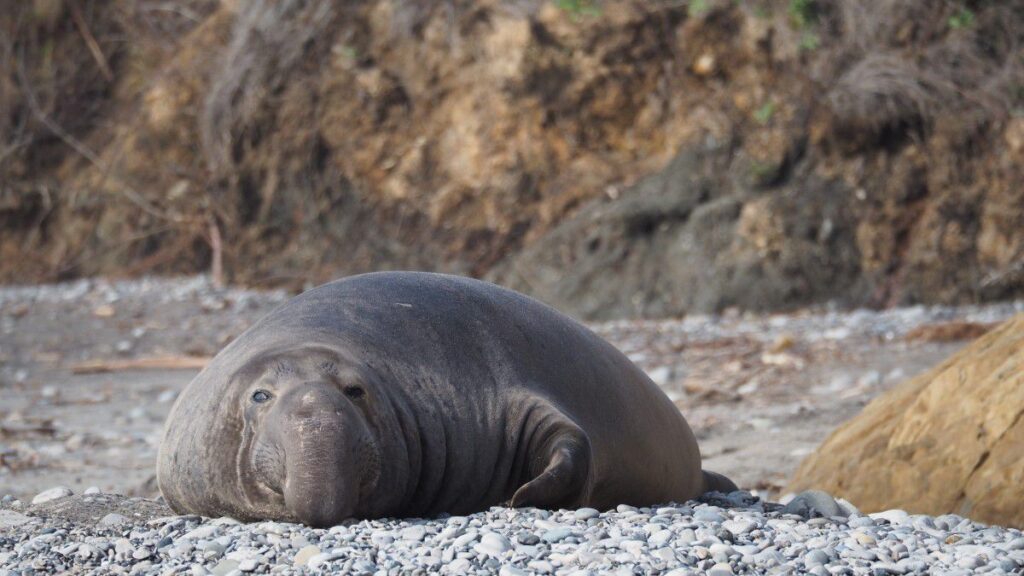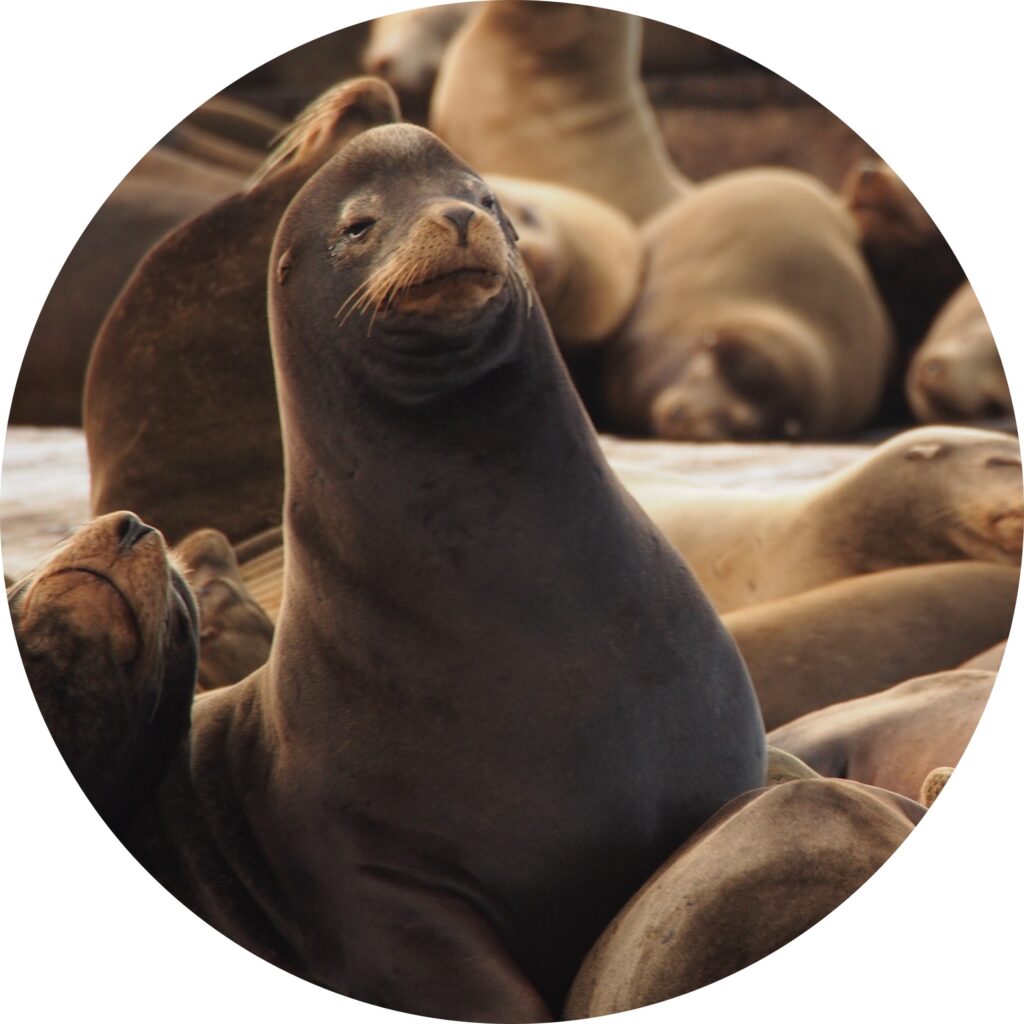| 英名 | Northern elephant seal |
| 学名 | Mirounga angustirostris |
| 分類 | アザラシ科 ゾウアザラシ属 |
| 分布 | 東部北太平洋 |
| 大きさ | オス:4.8m, 2200kg メス:3.6m, 770kg |
キタゾウアザラシとは?
キタゾウアザラシとは世界で2番目に体が大きいアザラシで、その名のとおりゾウのような特徴的な鼻を持っています。
雌雄で体サイズが大きく異なるのもキタゾウアザラシの特徴です。
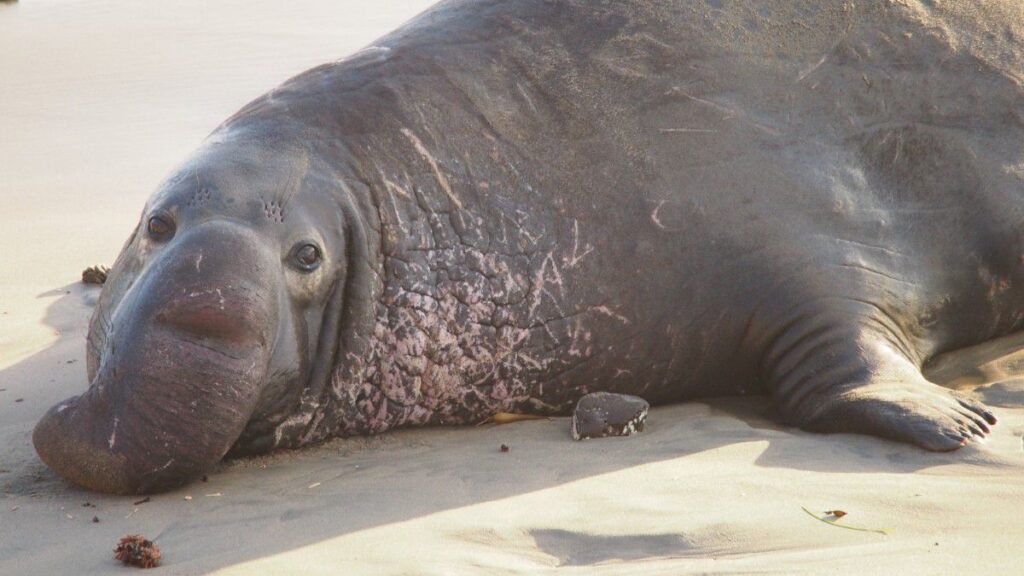
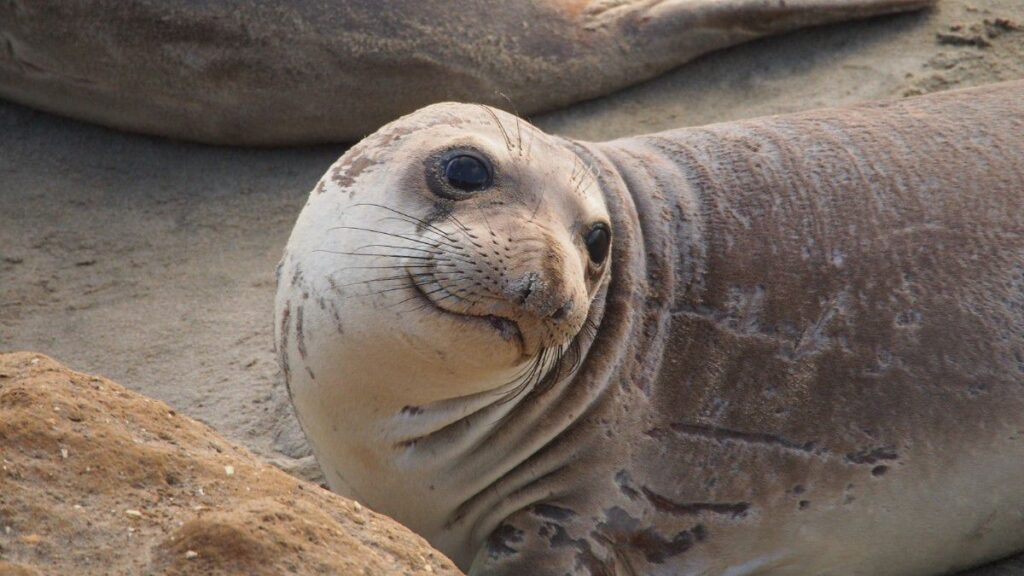
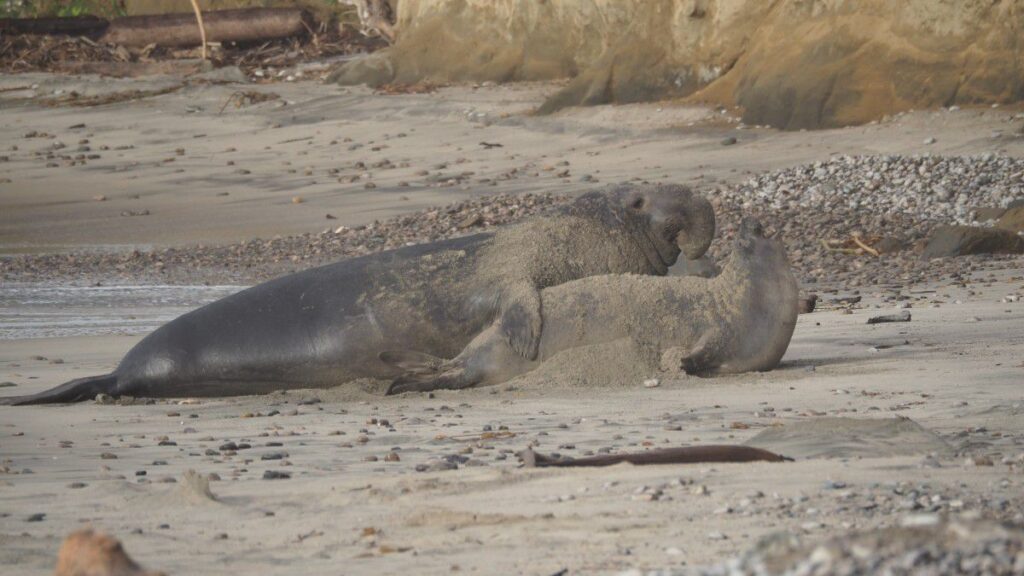
北太平洋に生息しており、繁殖期や換毛期になるとアメリカの西海岸に集団で上陸します。
日本の水族館でも数例飼育例がありますが、長期飼育には成功していません。
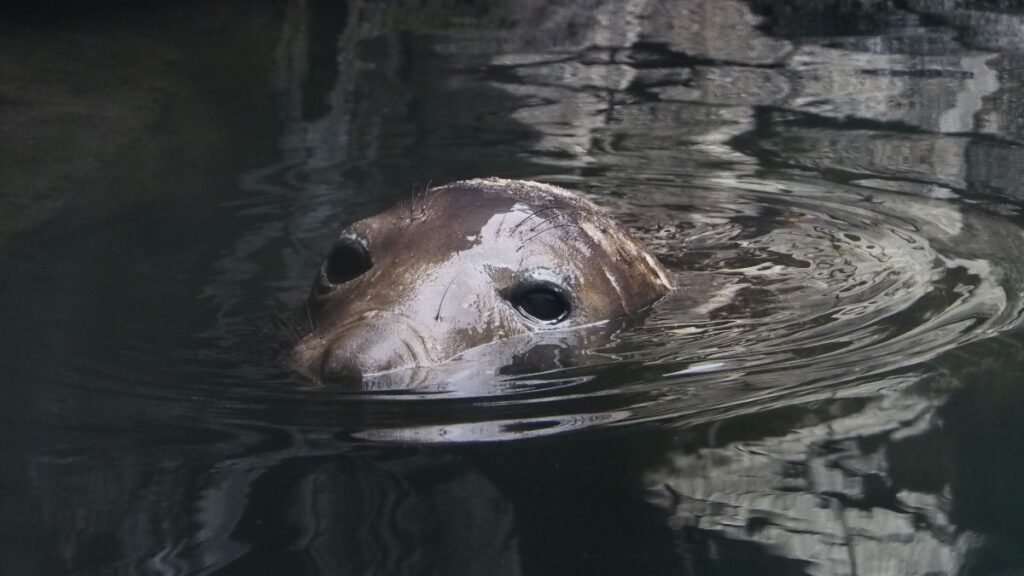
分布・回遊
キタゾウアザラシはアメリカ・カリフォルニア州~メキシコ・カリフォルニア半島の太平洋側に分布しています。(1)(2)
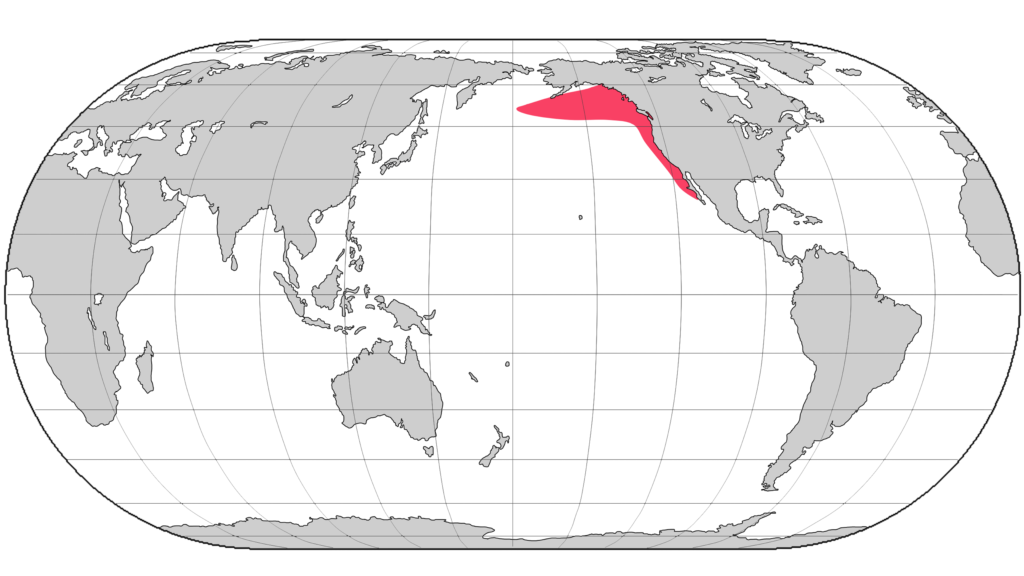
繁殖期(12~3月)になるとオスが先に繁殖地に集まり縄張りを形成します。その後にメスが上陸し、出産・交尾・育児を行います。(2)(3)
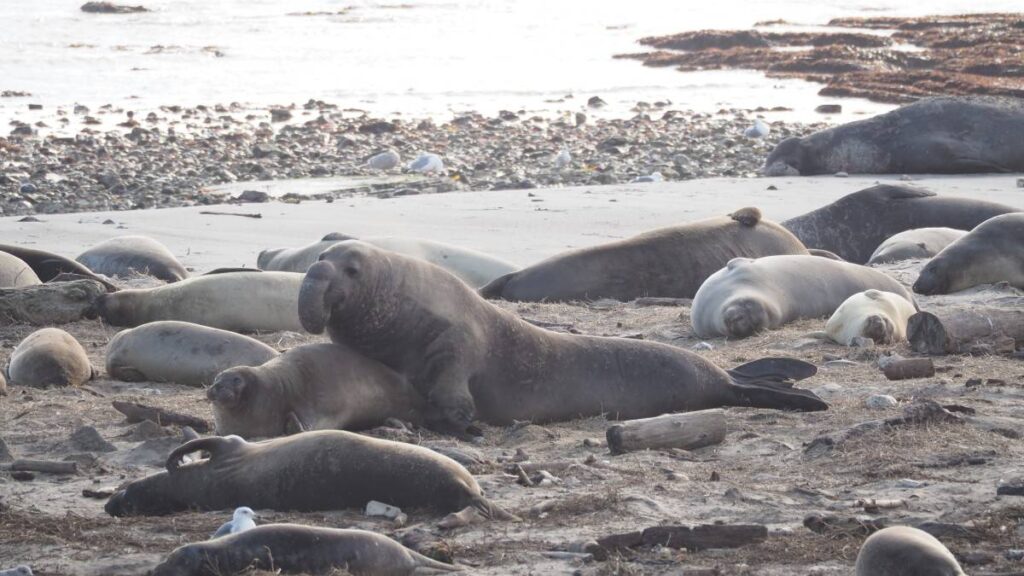
繁殖期が終わると外洋で採餌回遊をしますが5~6月になるとまた海岸に集まって換毛をします。(3)
換毛後は長い外洋生活に入るのですが、その回遊ルートはオス・メスで違っています。
オスではなんと20000km以上も移動した記録があります。(4)
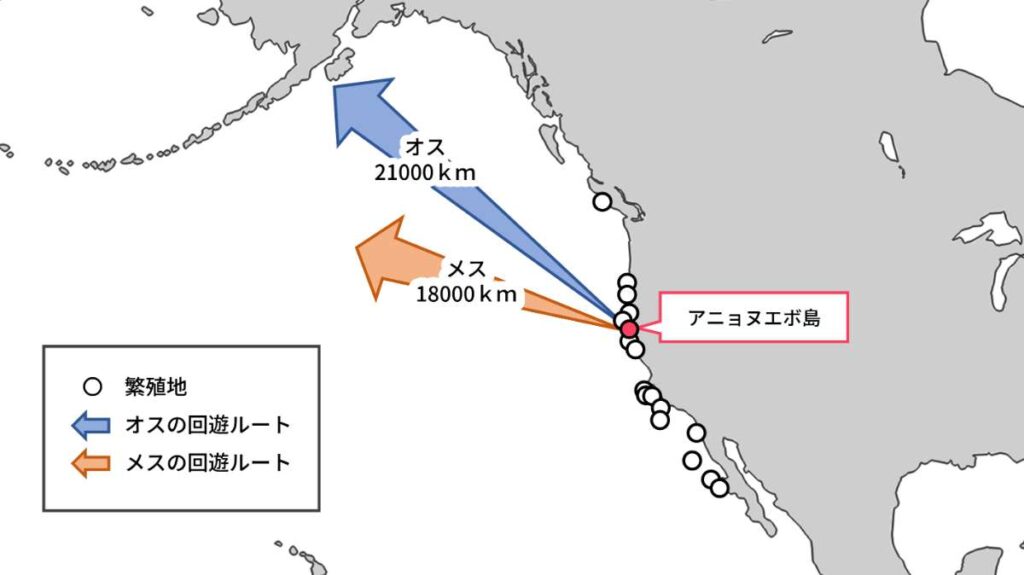
食性
繁殖期や換毛期は絶食をします。その後の回遊生活中に次のシーズンに備えて外洋で摂餌をします。
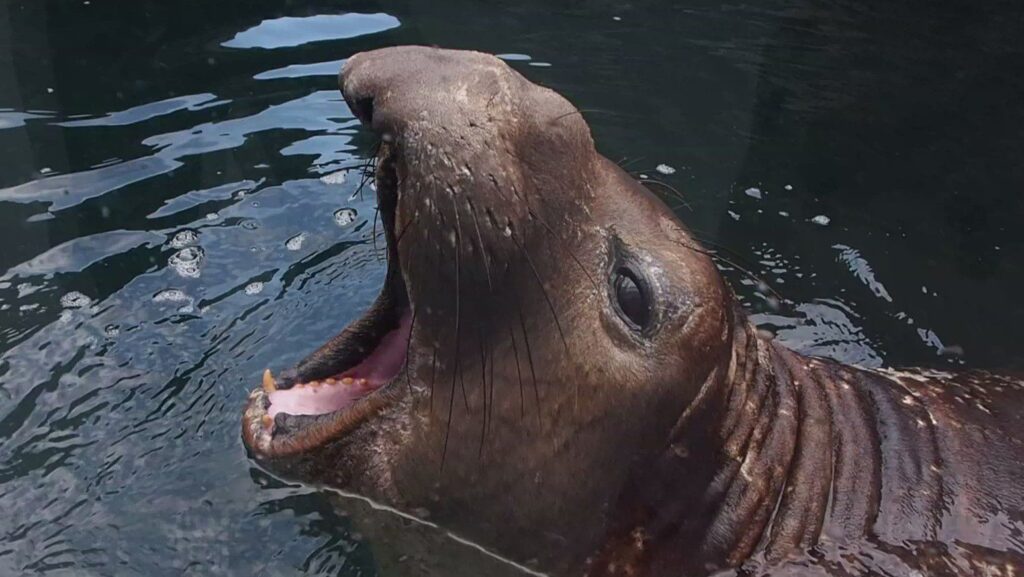
雌雄で食性は違っていて、メスは主に中深層性のイカを主に食べます。(5)
オスは何と小型のサメやエイも食べていることが分かっています。(6)
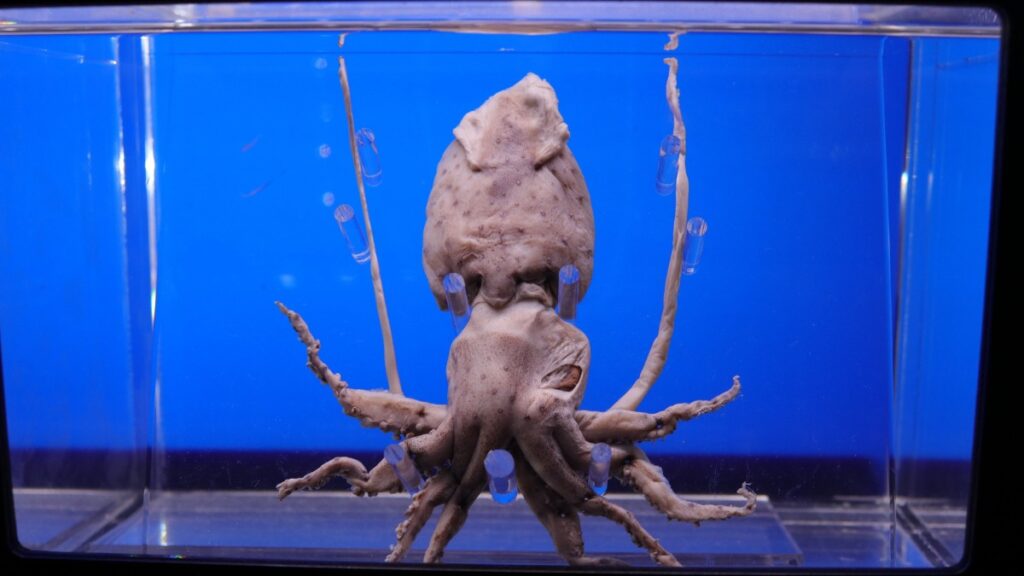
この食性や回遊ルートの違いは、キタゾウアザラシの繁殖形態が要因になっています。
オスは次の繁殖シーズンに闘争に勝ちやすくするために、リスクを取ってでも多くのエネルギーを得ようとしているのだと考えられています。(7)
ですが最近の研究ではメスのキタゾウアザラシがイカよりも魚を多く食べている報告もあり、まだまだわかっていないことが多い種でもあります。(8)
吉野ら(2020)の論文では、メスのキタゾウアザラシの頭に付けたカメラで撮影した摂餌の様子を見ることができます。
人間との関わり
1800年代から油を目的とした大規模な狩猟が行われるようになり、キタゾウアザラシの個体数は激減しました。
1850年代にはほとんどアザラシが取れなくなったそうです。
1884年にはキタゾウアザラシが絶滅したと宣言が出ました。
その後繁殖地でごくわずかに再発見された個体についても、博物館で標本にするために狩猟されていたそうです。(9)
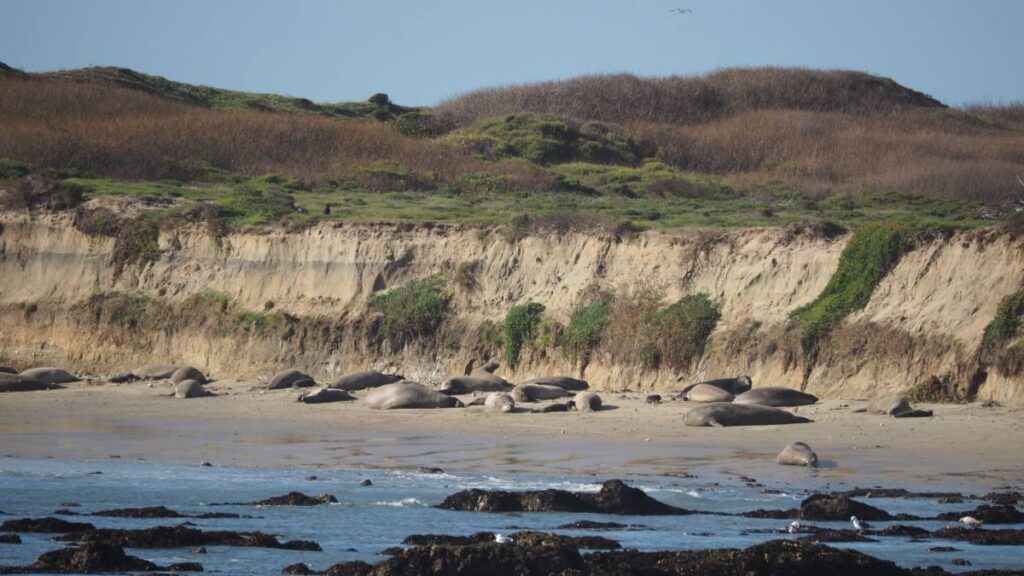
1890年代にメキシコ・グアダルーペ島で少数の個体群が発見されてからはアメリカとメキシコの両方で厳重に保護されるようになりました。
次第に個体数が回復し、その分布域も広げていきました。
現在では210,000~239,000頭まで増えたと推定されています。(10)
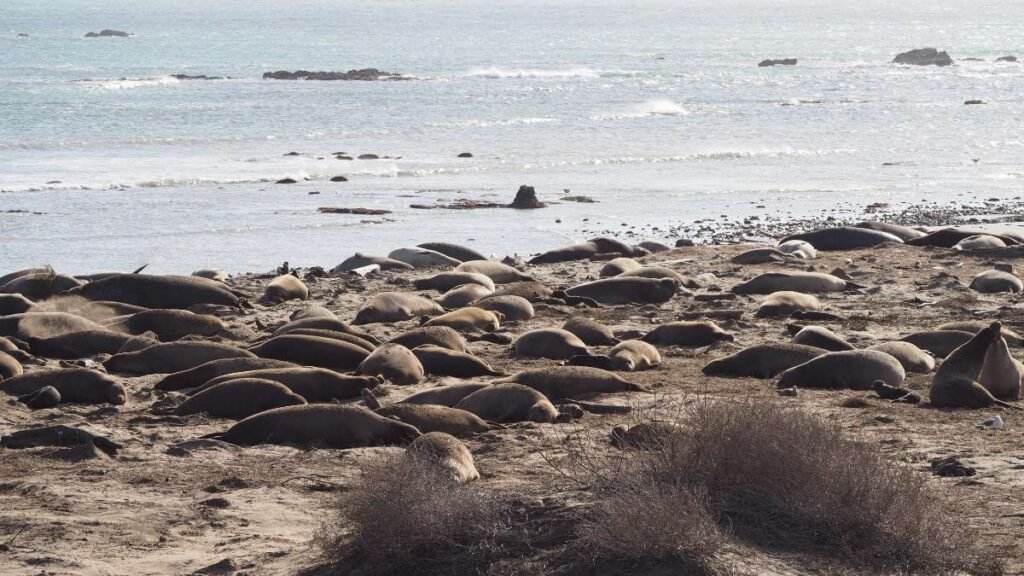
絶滅宣言が出たにも関わらず生き残ることができたのは、生涯のほとんどを海で過ごすというキタゾウアザラシ特有の生活史のおかげだと考えられます。
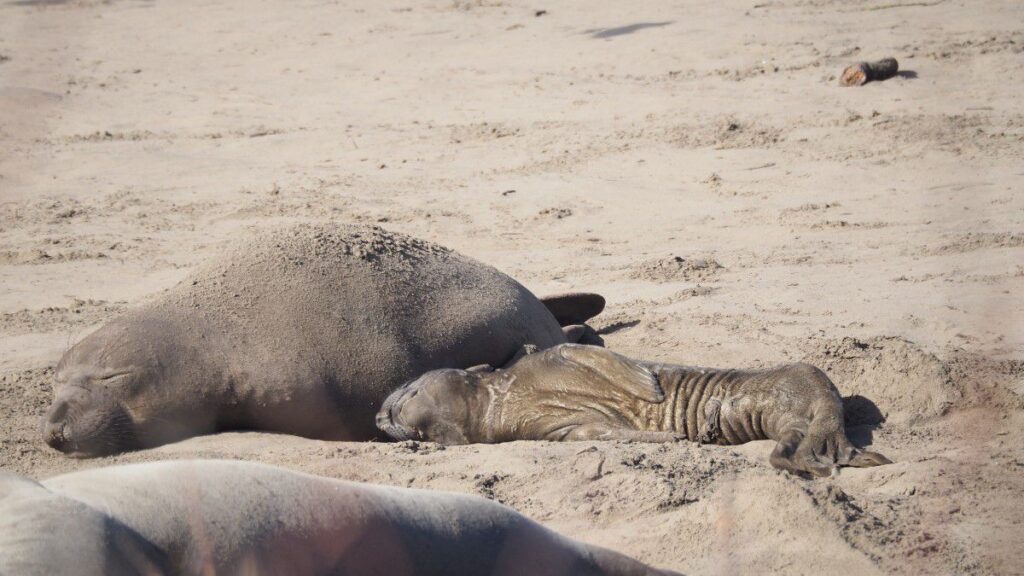
キタゾウアザラシに会える動物園・水族館
現在キタゾウアザラシに会える施設はありません。
【過去に飼育展示していた施設】
・鶴岡市立加茂水族館(2017年に保護し、2022年6月28日まで飼育)
・サンシャイン水族館(1989年に保護した漂着個体を約1年飼育)
・鴨川シーワールド(サンシャイン水族館より搬入した個体で、約1年飼育)
参考資料
1.King, J. E. (1983). Seals of the World.(Second Edition) Cornell University Press, Ithaca, New York. 240 pp.
2.Thomas A. J., Marc A. W., Robert L. P. (2008). 5-Pinnipeds. In Thomas A. J., Marc A. W., Robert L. P. (Eds.), Marine Mammal of the World (pp.306-444). Academic Press.[Link]
3.Carole A. & Phil A. (1999). Elephant Seals. (Revised Edition) Central Coast Press, San Luis Obispo, California. 60pp.
4.Stewart, B. S., & DeLong, R. L. (1995). Double migrations of the northern elephant seal, Mirounga angustirostris. Journal of mammalogy, 76(1), 196-205.[Link]
5.Antonelis G. A., Lowry M. S., Fiscus C. H., Stewart B. S.,DeLong R. L. (1994). Diet of the northern elephant seal. In Le Boeuf, B. J., & Laws, R. M. (Eds.), Elephant seals: population ecology,behavior, and physiology (pp.211-223). University of California Press, Berkeley, California.[Link]
6.Goetsch, C., Conners, M. G., Budge, S. M., Mitani, Y., Walker, W. A., Bromaghin, J. F., Simmons S. E., Reichmuth C., Costa, D. P. (2018). Energy-rich mesopelagic fishes revealed as a critical prey resource for a deep-diving predator using quantitative fatty acid signature analysis. Frontiers in Marine Science, 5, 430.[Link]
7.Kienle, S. S., Friedlaender, A. S., Crocker, D. E., Mehta, R. S., & Costa, D. P. (2022). Trade-offs between foraging reward and mortality risk drive sex-specific foraging strategies in sexually dimorphic northern elephant seals. Royal Society open science, 9(1), 210522.[Link]
8.Yoshino, K., Takahashi, A., Adachi, T., Costa, D. P., Robinson, P. W., Peterson, S. H., Hückstädt, L. A., Holster, R. R., Naito, Y. (2020). Acceleration-triggered animal-borne videos show a dominance of fish in the diet of female northern elephant seals. Journal of Experimental Biology, 223(5), jeb212936.[Link]
9.Stewart B. S., Yochem P. K., Huber H. R., DeLong R. L., Jameson R. J., Sydeman W. J., Allen S. G., Le Boeuf, B. J. (1994). History and Present Status of the Northern Elephant Seal Population. In Le Boeuf, B. J., & Laws, R. M. (Eds.), Elephant seals: population ecology,behavior, and physiology (pp.29-48). University of California Press, Berkeley, California.[Link]
10.Lowry, M. S., Condit, R., Hatfield, B., Allen, S. G., Berger, R., Morris, P. A., Le Boeuf, B. J., Reiter, J. (2014). Abundance, Distribution, and Population Growth of the Northern Elephant Seal (Mirounga angustirostris) in the United States from 1991 to 2010. Aquatic Mammals, 40(1).[Link]
